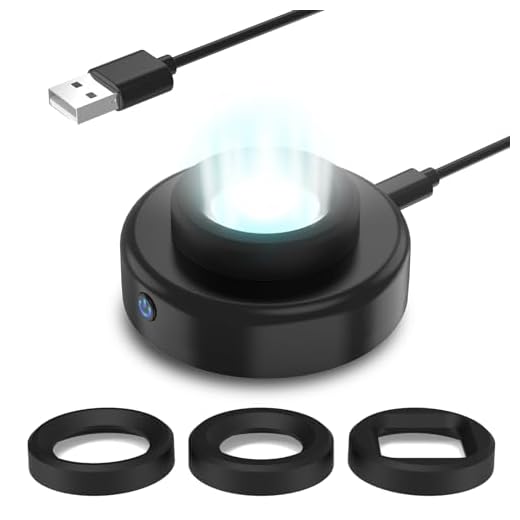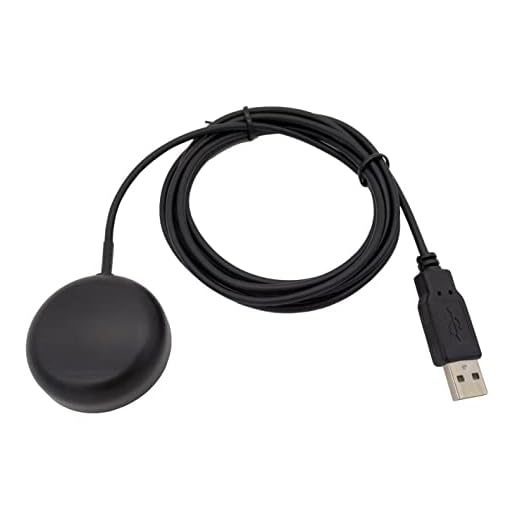Quick Start: Get Your Solar Watch Perfectly Synced in Minutes
I know it’s frustrating when a trusty solar watch drifts, so this quick, empathetic guide walks you through six simple steps to calibrate it and maximize power. Follow them and your watch will stay accurate and reliable in minutes today.
What You'll Need
Identify Your Watch Type and Features
Not all solar watches are created equal — know your model before you touch a button.Check the model number and consult the manual (or search the model online). Determine quickly whether your watch is pure solar, has an internal rechargeable cell, a power-reserve indicator, or built-in radio/GPS time sync.
Locate the solar panels, crown positions, and any control buttons. Try simple actions like pulling the crown to first/second positions to see hand behavior or pressing mode buttons to cycle displays — this tells you if there’s a dedicated calibration or hand-adjustment mode.
Identifying features tells you which calibration steps apply and whether you can use automatic time signals or must set hands manually.
Charge and Perform an Initial Reset
Want fast results? Begin with a full charge — sunlight is your secret weapon.Expose the watch to bright sunlight (avoid glass that reduces UV, such as closed car windows) with the dial facing the sun at a ~30–45° angle. Charge for the recommended time in the manual — e.g., a weak battery may need a few hours; a partially charged cell often tops up in 30–60 minutes in strong sun.
If indoors, use a strong full-spectrum lamp placed 6–12 inches away. Watch the dial or LCD for charging indicators and confirm a full power-reserve reading before proceeding.
If the watch behaves erratically, perform the manufacturer-recommended reset: move the crown and press buttons in the prescribed sequence to clear errors and return hands to a known position before calibration.
Choose and Sync to a Reliable Time Source
Skip guesswork — sync to atomic time for flawless accuracy. Why rely on approximations?Use a trusted reference: smartphone time (synced to NTP/atomic time), an online atomic clock, or a GPS/radio-controlled signal if your watch supports it.
Confirm your local timezone and daylight-saving rules before making adjustments.
Pause the seconds hand at a reference tick, set the hour and minute precisely, then release to minimise lag.
Align your release with your reference (e.g., when your phone shows 12:00:00).
Initiate a manual radio/GPS reception and verify the “signal received” confirmation before finishing.
Enter Calibration or Hand-Adjustment Mode
Hidden menu? Many watches have a calibration mode — here's how to find and use it.Access the watch’s adjustment mode per the manual—typically pull the crown to position 2 or press-and-hold a button for 3–5 seconds.
Follow these steps:
Exit the mode carefully to save settings and confirm the hands move normally.
Verify Accuracy and Test Power Reserve
How to test and prove it's truly calibrated — and how long it will last between charges.Check your watch against your reference immediately after calibration and again after 24–48 hours. Record any drift as seconds per day (e.g., “+7 s/day”).
Test the power reserve by fully charging the watch—place it in bright sun or under a strong lamp for several hours—then leave it in low light and note how long it runs before stopping or entering power-save.
Everyday Maintenance to Keep It Calibrated
Simple habits that prevent re-calibration — fewer headaches, longer life.Keep the solar panels clean and uncovered; wipe lenses with a soft microfiber cloth after workouts, beach days, or dusty commutes.
Give the watch a weekly bright-light exposure—place it on a sunny windowsill or under a desk lamp for an hour—to prevent deep discharge.
Shield the watch from strong magnets (speakers, bag clasps) and avoid leaving it in a hot car or a freezing environment to reduce timing drift.
Schedule professional service if charging or accuracy degrades, and install firmware updates for smart models as they become available.
You’re Done — Accurate Time, Minimal Fuss
A quick identification, full charge, precise sync and calibration check are all it takes; with simple upkeep your solar watch will stay accurate and reliable for years. Try the steps now, share your results, and keep perfect time every day.







Loved the troubleshooting tips. One nitpick: could use more photos of the button combos for different brands. Text is fine but images would save time.
Great suggestion, Zara. We’re planning to add annotated images for common brands in the next update — thanks for the feedback!
I have a weird one: after calibration, my watch gains slowly during the day but is fine overnight. Could temperature changes cause that?
Temperature can affect movement tolerances and battery performance. If the gain correlates with warm daytime temps, that might be the culprit. Also check for magnetic interference from speakers/phones nearby.
Ah, I work near big speakers all day. I’ll test leaving it in a different spot. Thanks!
Also check if the watch sits loose on your wrist during daytime activities — physical motion can sometimes change regulation slightly.
I got stuck entering calibration mode on a hybrid watch (analog + smart notifications). The guide mentions different modes but doesn’t list exact button combos for hybrids. Anyone have a walkthrough for a Fossil Hybrid?
Thanks for pointing that out, Maya. Hybrid models vary by maker — for many Fossil Hybrids: press-and-hold the lower-right button for ~5s to enter hand-adjustment, then use top/bottom buttons to move hands. I’ll add a short note to the guide with that example.
Short and sweet: this guide saved me a service trip. Did the whole calibration in 15 minutes and it’s been rock-solid for 2 weeks. Thumbs up 👍
Question: how often should I do the full calibration again? The guide’s maintenance section says ‘regular checks’ but no interval. Weekly? Monthly?
Good question, Carlos. For most users: quick checks every 1–3 months are enough. Do a full recalibration if you notice drift >15–30 seconds, after battery replacement, or after a strong shock/impact.
I just check monthly and recalibrate maybe once or twice a year. Works fine for me.
Tried this guide this morning on my older solar watch (no Bluetooth). Quick Start saved me a ton of fiddling — the part about letting it charge fully before doing the initial reset was the game-changer. One thing: my watch needed 3 full sun hours before the hands stopped jittering. Has anyone else seen that?
Yep, Amy — older cells and cloudy winter sun can make them take longer to stabilize. Glad Quick Start helped. If it keeps jittering after 3 hours, try repeating the reset after a full charge cycle.
I had jitter too — turning off any power-hungry features (if your model has them) helped during the initial charge.
Same here. My 7-year-old watch needed almost a day in bright window light once. Worth the patience.
Love the casual tone of the guide. Helped my partner set his watch in 10 minutes. One tiny thing: include a line about cleaning the solar cells (a dusty crystal can reduce charge).
Excellent addition — we’ll add a short note on gently cleaning the dial/crystal to ensure efficient charging.
No replies needed, just saying thanks. The maintenance checklist is 👌.
Okay, small rant: step 2 mentions ‘perform an initial reset’ but doesn’t warn that it can erase custom alarms on some models. I lost one alarm and was like uh-oh. Maybe a quick warning in the guide?
Thanks for pointing that out — I would have been mad too. Saved on my end because I wrote mine down lol.
Good catch, Peter. We should indeed warn readers to note any custom settings before a full reset. I’ll update the guide to include that precaution.
This line made me laugh: ‘You’re Done — Accurate Time, Minimal Fuss’. If only my cat didn’t hog my window sunlight, haha. Real talk though, any tips for indoor charging when direct sun isn’t an option?
Thanks — I’ll try the lamp tonight. Cat permitting 😹
My lamp trick works well — just a couple extra hours compared to direct sun.
If direct sun isn’t available, place the watch near a bright window for longer, or use a bright LED desk lamp (check manufacturer recommendations for lamp intensity). Avoid fluorescent tubes if possible — they can be inconsistent.
Short and sweet — the ‘Choose and Sync to a Reliable Time Source’ tip made syncing to my phone’s atomic time really easy. Pro tip: double-check DST settings on the watch before you lock it in.
Great tip, John. DST and time zone offsets are easy to overlook and can make a perfectly calibrated watch feel off.
Agreed — I once spent 10 minutes thinking my watch was broken because DST was on 😅
I followed steps 1–4 for my analog solar watch and thought I was golden, but after verification it was off by 8 seconds. I used a radio time signal as the source. Any ideas why there’s still a small offset?
If your model has a manual seconds alignment, use that. Otherwise I wouldn’t worry about 8s — most folks won’t notice.
If it bugs you, repeat the calibration once more after 24 hours of normal wear — sometimes it ‘settles’ into better accuracy.
Good point, Marcus. Calibration during a low-power state can introduce inconsistencies — always perform verification after a full charge.
Also check if the calibration was done right after a charge cycle. Doing it while battery is low can affect servo precision.
Small offsets like that can be due to mechanical tolerances in the hands or the micro-step increments the motor uses. If it’s consistently +8s, some models allow fine hand-adjustment (step 4). Otherwise it’s within typical mechanical tolerance.
Funny thing — I tried the guide and my watch briefly synced to my phone but then jumped an hour ahead. Turned out my phone’s time zone was set to a different region (long story). Moral: check both devices. Also, lol at step 6 if you’re a ‘set it and never look’ person like me 😂
Been there 😂 Had the same issue while traveling — phone auto-switch to local time messed with my watch during a quick sync.
Also, pro tip: disable auto-time on the phone temporarily during calibration if you want absolute control.
Classic timezone gremlin. Thanks for the laugh, Liam. Always check the phone and watch settings if something weird happens after sync.
Long post — hope this helps others.
I own two solar watches: one high-end and one entry-level. Followed the guide step-by-step for both.
High-end: calibration was seamless, charge quickly, and accuracy was almost perfect after one run-through.
Entry-level: needed two tries and a manual fine-adjust because the hands would creep a few ticks. After that, both stayed stable.
Bottom line: the guide is solid, but lower-end models might need an extra round of patience.
Nice write-up. I can vouch for ‘extra patience’ on the cheaper ones.
Thanks for the detailed comparison, Sophia — very useful for readers choosing between models.